A trademark is any word, design, symbol or phrase, that identifies the source of a particular product or service. For example, “Apple Computer” doesn’t indicate a computer generally. It indicates a computer produced by Apple Computer Corporation. The golden arches in front of a McDonald’s Restaurant doesn’t indicate “hamburgers,” but hamburgers produced by McDonald’s Corporation.
Many business owners get confused with the difference between the name of their company, and a brand name. A brand name can be the trademark — the name used in public attached to the product or service being sold. When I reference “Apple Computer” by “Apple Computer Corporation”, the first part is the brand name or trademark, and the second part is the name of the company. These two parts can certainly be the same or similar, but not always.
There are many misconceptions about trademarks and company names:
- The Secretary of State does not do a Trademark Evaluation. Just because you have a company name registered at your state’s Secretary of State, doesn’t mean you “own the trademark”, nor does it mean you have a right to the name. You must conduct proper research, before adopting a brand name.
- Exact matches are irrelevant. Trademark law uses what’s called a “likelihood of confusion” when comparing trademarks, and if your brand name looks similar, sounds similar or means something similar to another trademark, you can find yourself in trouble. Just because you didn’t find anyone else using your exact name, doesn’t mean it’s available to use. Similarly, removing or adding spaces, changing pluralization, or the spelling of a pre-existing trademark may not be sufficient to avoid a trademark infringement claim./li>
- Fighting a trademark infringement claim is expensive. So is changing your company’s brand name, especially when you have so much invested in the domain name, website, business cards, electric sign out in front of your store, and so on. What you don’t want to do, is find yourself on the losing side of a trademark infringement claim.
- First use in commerce matters most. Even if you’ve been using a brand name for years, someone else with a confusingly similar trademark will be able to stop you from using your brand name if they have a valid US trademark. You cannot rely on time to resolve the issue.
What is Trademark Infringement?
Trademark infringement is a federal cause of action where a trademark holder (i.e. a party who has validly registered their brand name at the United States Patent and Trademark Office (or USPTO)) claims your use of your brand name is “likely to confuse” the public, because your mark is the same or similar in sound, meaning or look. There are other factors to a “likelihood of confusion” analysis, but the similar sound, meaning or look is the biggest issue.
A trademark infringement lawsuit will also include other claims, usually “trademark dilution” and “unfair competition,” among others. The big problem, is that the complaining party can sue where they are located, not where you are. You may be forced to travel across the company to defend yourself, and if you lose, you could lose big: a successful trademark infringement lawsuit can mean an injunction, damages (up to 3-times damages in some circumstances), lost profits, attorneys fees and more.
A trademark infringement lawsuit is not something you want to risk fighting, unless the facts are squarely on your side.
What to do when first starting up a company?
What you want to avoid, is infringe on someone else’s trademark by using a name that is similar in look, sound or meaning. This is a very difficult search to do, and you would be well-advised to seek assistance from a competent trademark attorney to conduct what’s known as a “trademark assessment” or “trademark search” before you start etching the name of your company in glass. Doing this step can potentially save you tens-of-thousands of dollars down the road.
If you have a name that is unique, and you’re given a green-light to go forward, then consider actually registering the brand name as a US-based trademark. You would do this for three reasons:
- First, to verify the brand name is actually available, because the USPTO will do a very comprehensive search and their search is viewed as persuasive.
- Second, to prevent anyone else from trying to use that name and unfairly competing with you by confusing the public that they are you.
- Third, to prevent someone else from usurping your use of the name (i.e. you use the name first, but don’t trademark it — someone else does and then goes after you later, after they have made the mark incontestable).
What to do if you receive a Cease and Desist Notice?
So, you’re reading this blog article too late. You named your company and didn’t do a proper trademark search, nor did you register a trademark. Now, you’ve received a Cease and Desist Notice (called “C&D Letter”). If you’re lucky, the C&D Letter will only demand you stop using the trademark. If you’re unlucky, the C&D Letter will not only demand you stop using the trademark, but will demand you provide reports on sales and profits and more.
When you receive a C&D Letter, the first thing to remember is that trademark law can be very arcane. What you do NOT want to do, is pickup the phone and give the complaining party (or their lawyer) a call and a piece-of-your-mind. You can make things worse for yourself, by inadvertently admitting or saying something that can be used against you or making your case weak.
What you DO want to do, is consult with a trademark attorney. They will review the C&D Letter, ask you questions about your use of the trademark, and let you know what your options are. Those options will usually one or more of the following:
- Change your name immediately, respond “mea culpa” (which means, acknowledging fault), and hope the complaining party goes away.
- Seek some sort of compromise. If your brand name is quite different from the complaining party’s trademark, or you two serve very different industries, a case for trademark infringement may not be certain. It may be possible, therefore, to seek some sort of “co-existence agreement” where you agree you’ll use the mark in one area, and the other party will use the mark in another area.
- Fight. If you have an experienced trademark attorney, and you have an actual trademark, you’re use predates the complaining party, and your trademark attorney doesn’t feel there are other factors that could decide a lawsuit against you, then you may want to fight it out if you cannot reach a compromise.
No matter how you feel about your brand name and the complaining party, you must always treat a trademark infringement claim seriously — or you risk the potential damages I mentioned above.
If you’ve received a C&D Letter claiming trademark infringement, or you believe your trademark (or brand name) is being infringed by another party, contact us to evaluate your options.
Business Law Southwest (BLSW). Business law that makes business sense. A Slingshot company.






